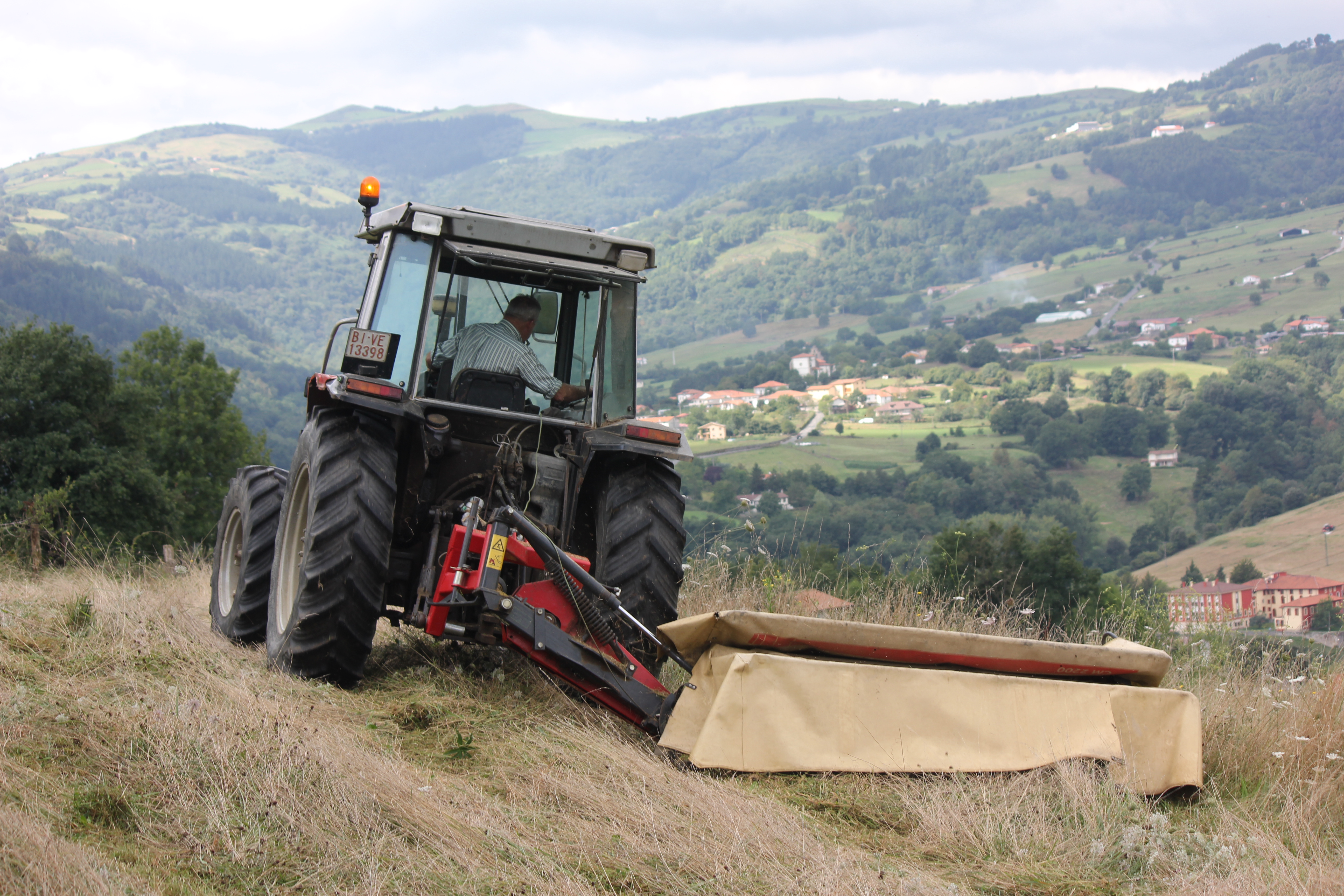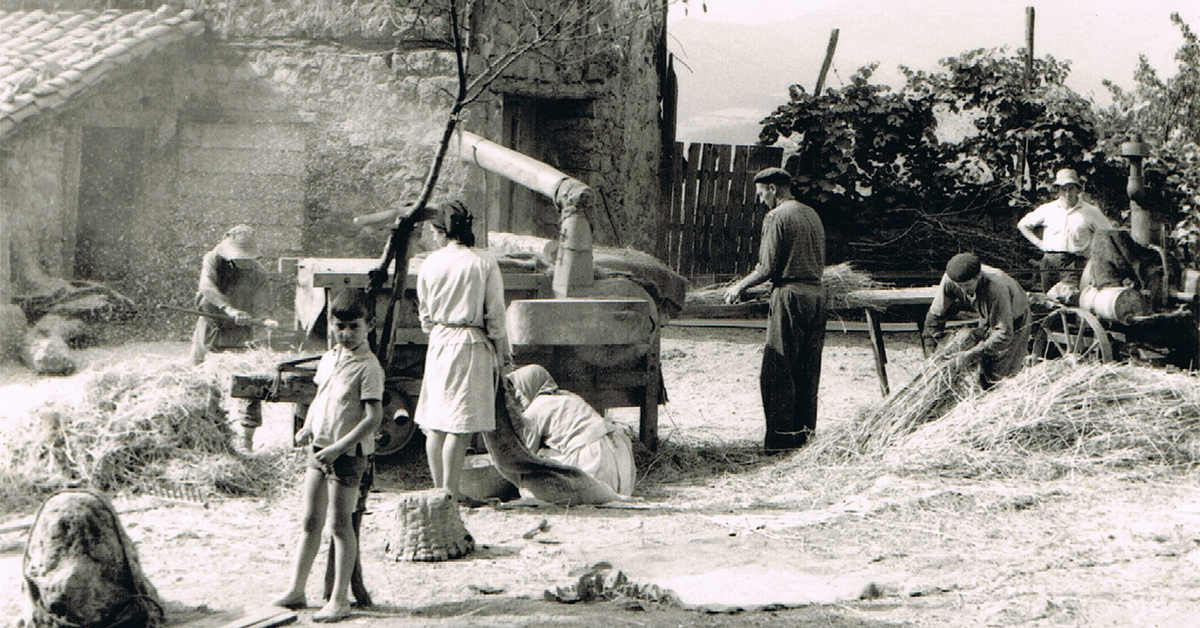Archives
Wheat was once a crop of great relevance in the territory of Bizkaia, wheat bread being an essential component in the diet of common folks. Abandonment of wheat took place from the 1950s onwards, because of the hard work and efforts which its cultivation required, and coinciding with the greater possibilities of buying the end product in shops and markets.
Despite the substantial importance of this crop, the excessive humidity of our climate, highly detrimental to its production, posed huge challenges. As a matter of fact, the annual wheat harvest would by no means be sufficient to meet the needs of the population, and importing became a must.

Artoak. Labayru Fundazioa Photographic Archive.
Maize (artoa) would be sown in April, immediately after a winter crop of turnip, and harvested in October, right in time for wheat sowing. Seed from selected maize ears (artaburuak) was saved from one year to the next.
In former times seeds would be broadcast by hand and the soil harrowed in order to spread them evenly and cover them. Later on planters started to be used to lay seeds down in rows. Seedlings are to be thinned following germination, so the remaining plants have adequate space for growth. When maize plants are well up, bean seeds can be sown among them, because bean germinates rapidly and would otherwise take away the sunlight maize plants need to prosper. Maize was indeed traditionally, and still is, intercropped with beans, maize stalks serving as poles for the bean plants. Bean sowing was best done by a team of three: one dug the hole, another planted the seed, and a third one covered it. (more…)

Preparing the Maypole, 2017. José Ángel Chasco.
Peasants today rely on commercial or mutual insurance for compensation of losses caused by hailstorms. However, ancient rites and charms are still practised to provide protection against the hazard of damage to crops, animals and people. On 3 May, the Finding of the Holy Cross, a Maypole (Mayo, in Spanish) is erected in San Vicente de Arana (Álava) to guard cultivated fields and harvests from the ravages of storms and remains in place throughout the summer until it is taken down on 14 September, the Exaltation of the Holy Cross. (more…)

Grass harvesting in Carranza (Bizkaia), 2017. Luis Manuel Peña. Labayru Fundazioa Photographic Archive.
The eighth volume of the Ethnographic Atlas of the Basque Country, this one dedicated to agriculture, is about to see the light of day. It relates to a previous volume on livestock farming and shepherding, as could not be otherwise, since agriculture in traditional societies is closely linked to these activities. The present work includes a chapter devoted to grass, where the mentioned linkage is perhaps most clearly appreciated, its cultivation and care being designed for the provision of animal feed. (more…)



